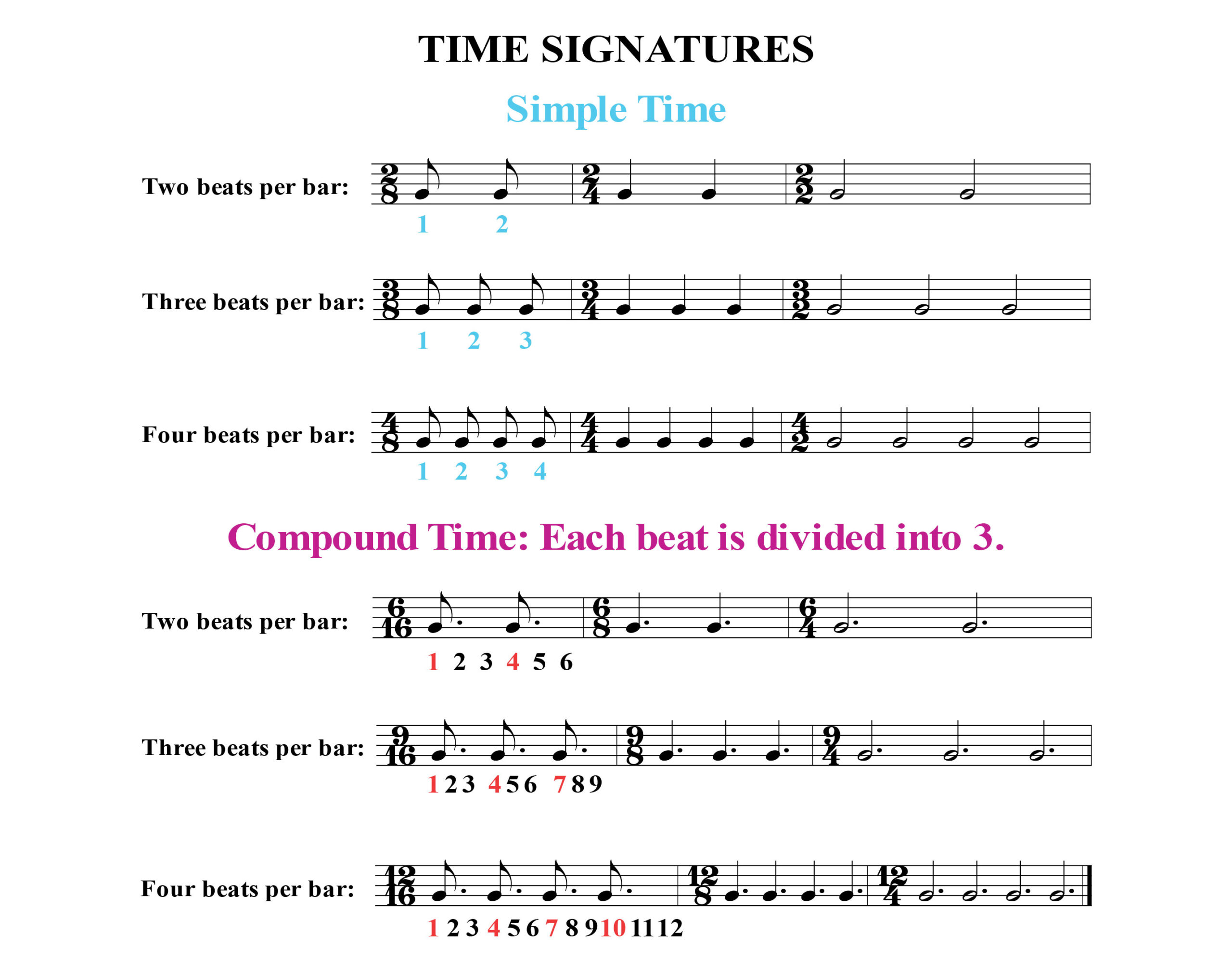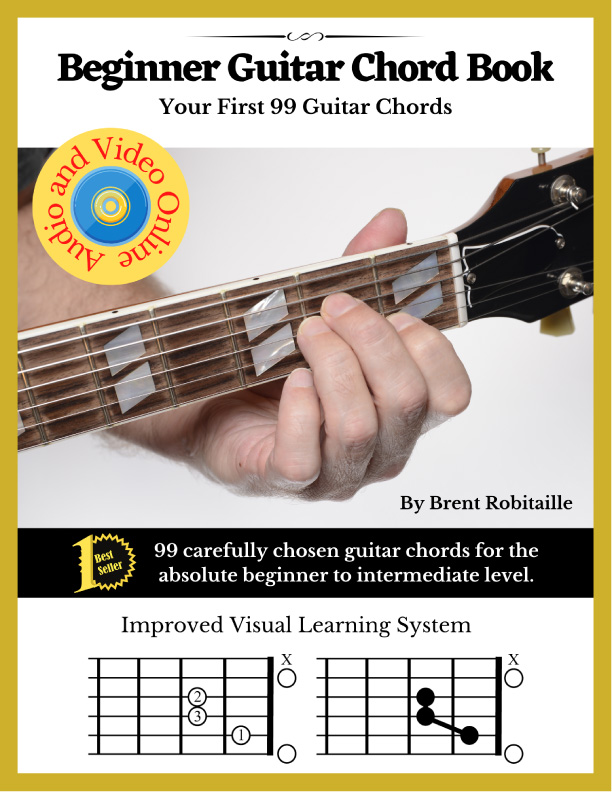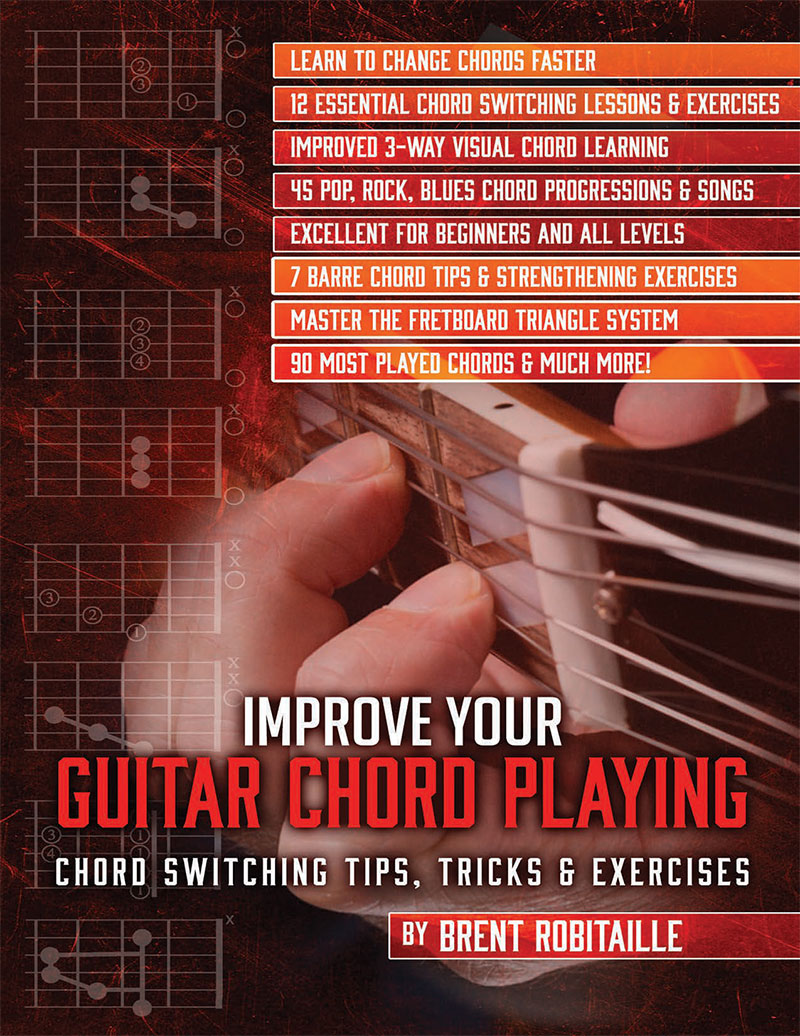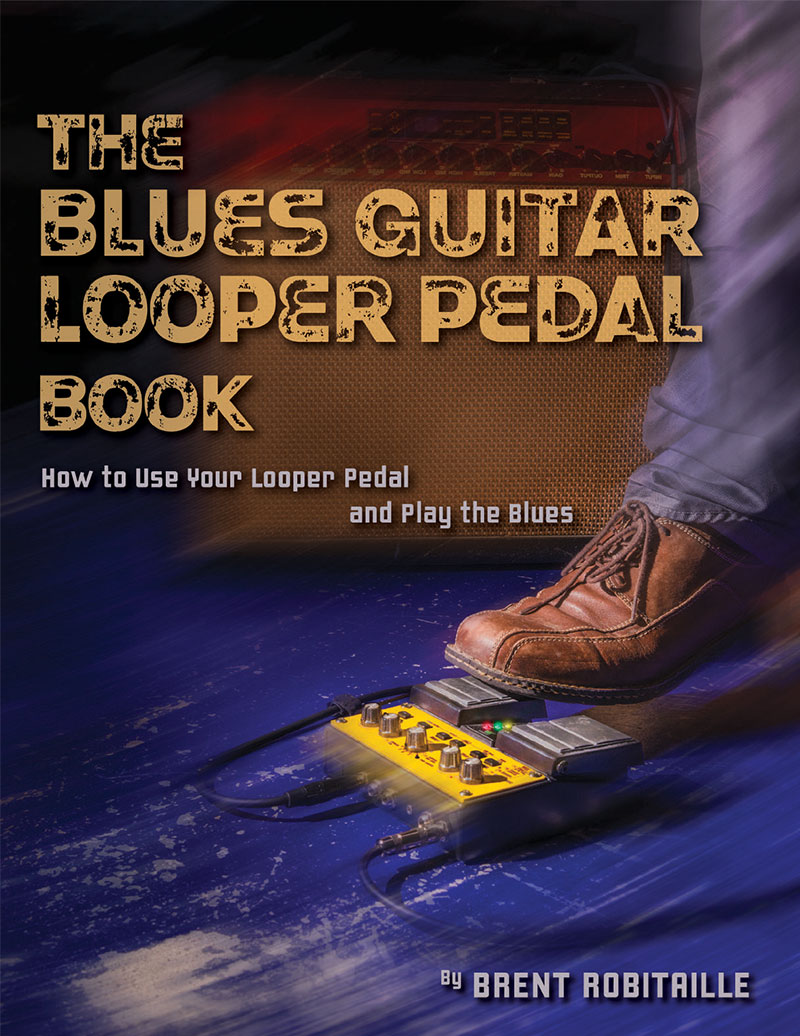Top 10 Tips for Better Music Rhythm
If I could sum up the most requested question after 30 years of teaching music, it would be “I need help with strumming and rhythm.” While some students get rhythm right away, most need many hours of practice to develop a good sense of rhythm. So, I have assembled 10 tips I’ve learned as a teacher over the years to help with your sense of rhythm and hopefully improve your playing.
The first step to mastering rhythm is to understand that the heart of the music is the pulse, the song’s beat, why you tap your foot. Most music people listen to revolves around rhythm. Rhythm is one of the four main elements of music so feeling the rhythmic pulse in your body when you practice or perform is a key to sounding better. Also, knowing where the downbeat falls (1st beat of each measure) and sensing the larger or macro rhythms (verse/chorus, etc.) keeps everything in place.
Before moving on to subdivisions of the beat and more complicated rhythm patterns, you must first learn how to feel the pulse. That is your starting point. Now let’s have a look at my top 10 tips for better rhythm.
1) Know the time signature and tempo of the song before you start playing.
When learning a new piece or composing one, always know where the main rhythm pulse feels natural. Hopefully, you can tap your foot or clap your hands along with the music without too much effort. See if you notice any repeating patterns and if there is an accented note.
When you know where the repeating patterns are, we can begin to figure out the time signature. Is the song divided into groups of 4, 3 or maybe 6? Which beat has a stronger accent? Does the harmony or chords follow a similar rhythm pattern, and what beat are the chords changing on? The first or maybe the third beat?
Look at the chart below to see a list of the most common times signatures used in popular music. 4/4 is by far the most typical. In fact, it’s called “common time.” Notice the different groupings of beats. Some beats are grouped in 2, 3, 4 and 6. Without getting into much theory, just understand that rhythm and the pulse usually falls into the groups in the time signature chart below:

Time Signature Test
Let’s try a little test. Listen to these three songs and see if you can figure out what time signature they are in:
The three songs are “Dreams” by Fleetwood Mac, “Are You Lonesome Tonight” recorded by Elvis, and “Norwegian Wood” written by Lennon/McCartney.
Here are links to the songs on Youtube, but if the links don’t work, just do a search.
1) Are You Lonesome Tonight: https://www.youtube.com/watch?v=9XVdtX7uSnk
2) Norwegian Wood: https://www.youtube.com/watch?v=Y_V6y1ZCg_8
3) Dreams: https://www.youtube.com/watch?v=5oWyMakvQew
And the time signature answers are:
“Dreams” by Fleetwood Mac is in 4/4 time.
“Are You Lonesome Tonight” is in 3/4 time.
“Norwegian Wood” is in 6/8 time.
How many did you get right?
So, to sum up, the next time you practice, make sure you know the time signature of the music before you play a single note.
“There is music wherever there is rhythm, as there is life wherever there beats a pulse.” ~ Igor Stravinsky
2) Think of the metronome as another musician.
I’ve had many students tell me they have trouble playing with a metronome. My advice is don’t play against the metronome: play along with the metronome. Imagine someone is clapping their hands, and you are just jamming along. Nobody has perfect rhythm, so accept that you will be off from time to time; just try to get back in the groove if you go astray. If you don’t have a metronome, there are many free apps online like this site: (https://www.metronomeonline.com/).
Set the metronome to 60 beats per minute (bpm), which is the same speed as a second hand on a clock, then pick a scale or a chord and just jam with the metronome. Try to feel the steady pulse, then apply a time signature grouping, i.e., put the beats into groups of 4, 3 or 6.
If you have a metronome with “tap tempo” (you tap the screen, and it tells you how fast a song is), put on some music and try to figure out the approximate tempo. Often songs fluctuate in speed, so you might get different readings in different parts of the song. Still, for the most part, tempos stay relatively constant.
Here is a review of the main rhythm values in music. We use notes with stems and dots but the best way to understand rhythm is to visualize how long a note rings or lasts.
3) Practice the subdivisions of the beat
When I was a teenager, I bought a small set of drums to help practice my rhythm. I remember spending an entire weekend in a trance practicing all the different subdivisions of the beat. There are countless ways to divide up a beat using all the different note values above but begin with the basic eighth note.
We normally count eighth notes with an & after the number. So, 1 & 2 & 3 & and so on. Triplet with 1 & a, 2 & a, etc. And sixteenth notes with 1 e & a, 2 e & a, etc.
Listen and watch the video below to see how the beat is divided into 1, 2, 3 and 4:
And here’s a list of all the sixteenth note subdivisions in a beat. Divide each beat into 4 by counting 1 e & a. You will see in the video that the main pulse is playing the bass drum. If you can, try to tap your foot and clap out the different sixteenth note subdivisions.
Tip: Practice the different subdivisions with scales, arpeggios and chords if possible on your instrument.
4) Learn how to play dotted notes correctly.
Many students struggle with dotted and syncopated rhythms and lose sight of the main rhythmic pulse. The dotted quarter note is one of the most common rhythms you need to master.
Start by tapping your foot with the main pulse and playing on the “off” beat, that is, playing in between the tap of your foot. Write out the eighth note rhythms with 1 & 2 &, etc., and try to feel the 2nd without playing it. Watch the video below and learn to play in between the clicks of the metronome. A dotted note lengthens a note, and this makes the note fall between the main beats.
“Rhythm is something you either have or don’t have, but when you have it, you have it all over.” ~ Elvis Presley
5) Practice playing behind and ahead of the beat.
Practice and get comfortable playing behind (push) and ahead of the structured beat. Most music you will play has syncopated rhythms putting accents where they aren’t expected. Playing behind the beat or a “push” puts the even rhythm off balance, making the music feel unstable.
This instability helps drive the rhythm forward, adding excitement. Again, knowing where the downbeat and main pulse will be essential to master syncopation.

Tip: Practice adding accents on different beats. For example, if you are in 4/4 time, add an accent on beat one while playing a scale, then beat two, etc.
6) Practice with a straight and shuffle beat.
Practice a straight eighth note pattern and a shuffle rhythm. A straight rhythm is as it sounds, play with an even steady subdivision of the beat. Shuffle rhythm is when you play with a long-short rhythm. If you divide each beat into 3, then count evenly 1-2-3 but only play on the 1 and 3 beat. The shuffle or swing is most common in blues, pop, and jazz but really standard in all styles, even classical!
Listen to the first example in the guitar strumming video. You will see/hear a straight followed by a shuffle rhythm.
7) Make up speech rhythms to internalize common rhythmic patterns.
Most students learning music at some point were taught speech rhythms. A speech rhythm is a little word or utterance you memorize for short rhythmic patterns. Listen to the rhythm and say the little word, then practice on your instrument. Here are a few speech rhythms to try below:

For more rhythm counting systems like the Kodaly method, you can check out the Wikipedia article on counting rhythms.
8) Practice with a drum machine or backing tracks.
Not only for rock and blues, but I also use a drumbeat to practice classical pieces to really internalize the pulse. Here are a few simple drum loops to jam along with. One straight rock beat and one shuffle beat. There are 4 tempos to choose 60, 80, 100 and 120 beats per minute. The metronome is handy, but I find practicing with an actual drumbeat even better no matter what style you play.
9) Become familiar with the song and memorize the chord progression
Probably the worst enemy to a good sense of rhythm is not knowing your song well enough, or one of your hands is out of sync. The first problem is easy to fix by memorizing the song or knowing where you are going by good practicing habits. If you read music or chord charts, learn the tricky parts so you can keep an even-flowing rhythm.
The second issue that can sabotage your rhythm is your hands being out of sync. That just means one of your hands is either ahead of behind, and the two hands are not synced together. You can fix this by practicing hands separately, so you can really zone in on your technique. It’s pretty hard to keep the rhythm steady when you are struggling to even play the notes. If there is a hard fingering or just too fast in your music, there is only one solution: Play it slower!
“Rhythm is our universal mother tongue. It’s the language of the soul.” ~ Gabrielle Roth
10) Write down the tempo or use a word to describe the speed
In the past, composers would write down the tempos with words like Andante or Allegro to describe the speed of the music. These words are often described in terms of your walking pace. For example, andante is “an easy walking pace.” with the metronome set between 56-80 bpm.
Set the metronome at 60 (which is a click every second) and actually walk to that beat. Your foot should hit the floor with each click. With practice, you will be able to approximate different tempos by imagining yourself walking at a slow pace, for example. Here is a sample of tempos using the traditional markings:
- Larghissimo – very, very slowly (24 bpm or less)
- Larghissimo – very, very slowly (24 bpm or less)
- Adagissimo – very slowly
- Grave – very slow (25–45 bpm)
- Largo – broadly (40–60 bpm)
- Lento – slowly (45–60 bpm)
- Larghetto – rather broadly (60–66 bpm) Adagio – slowly (66–76 bpm)
- Adagietto – slower than andante (72–76 bpm)
- Andante – at a walking pace (76–108 bpm)
- Andantino – slightly faster than andante (80–108 bpm)
- Andante moderato – between andante and moderato (92–112 bpm)
- Moderato – at a moderate speed (108–120 bpm)
- Allegretto – moderately fast (112–120 bpm)
- Allegro moderato – slightly slower than allegro (116–120 bpm)
- Allegro – fast (120–156 bpm) Vivace – lively and fast (156–176 bpm)
- Vivacissimo – very fast and lively (172–176 bpm)
- Allegrissimo or Allegro vivace – very fast (172–176 bpm)
- Presto – very, very fast (168–200 bpm)
- Prestissimo – even faster than presto (200 bpm and over)
For more information on tempo markings check out the Wikipedia article on counting rhythms.
Keep studying rhythm ….
After playing a while, it’s easy to forgo regular rhythm practice, thinking you can just work it out. In fact, I remember a musical director always asking the drummer to teach him the rhythms. And he was supposed to be the conductor!
Rhythm is a lifelong journey, but with every minute you spend working on it, you are mastering one of the most, if not the most essential element of music. Ultimately, consistent rhythm study will improve how you sound.
For more tips on becoming a better musician, read this post:
Do you have any suggestions for more free music lessons? Or have some more good tips for learning rhythm? Then leave your comments below.
Beginner Guitar Chord Book
Learn your first 99 guitar chords quickly using Brent’s visual system tried and tested with thousands of students. Designed for the complete beginner to intermediate level guitar players of any age. The chords you will learn are the most frequently played chords in pop, country, folk, and rock guitar playing.
The Beginner Guitar Chord Book will you get jamming in no time. Check out the accompanying video and audio below.
Improve Your Guitar Chord Playing
In Improve Your Guitar Chord Playing – Chord Switching Tips, Tricks & Exercises, you will learn the essential skills required to master the most frequently used chords. Discover valuable lessons and exercises to play faster, precise sounding chords and an improved 3-way visual chord learning system with tests to help remember chords.
The Blues Guitar Looper Pedal Book
In the Blues Guitar Looper Pedal Book, you will learn how to use your guitar looper pedal and play the blues like a pro. The looper pedal is an excellent companion for any blues guitarist. Master essential looping techniques while your improve your blues guitar playing.
go to the music books page
Go to the music posters page




